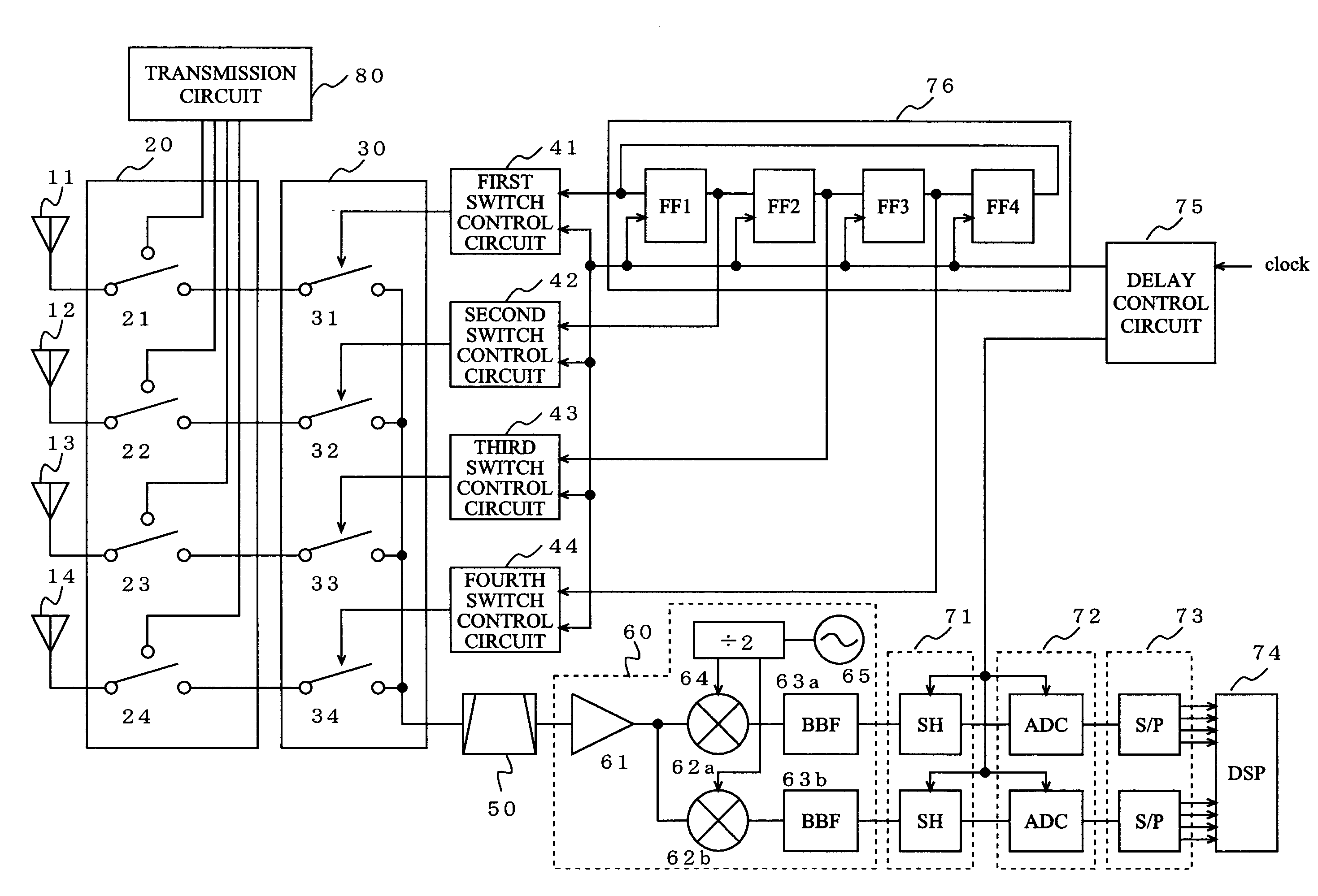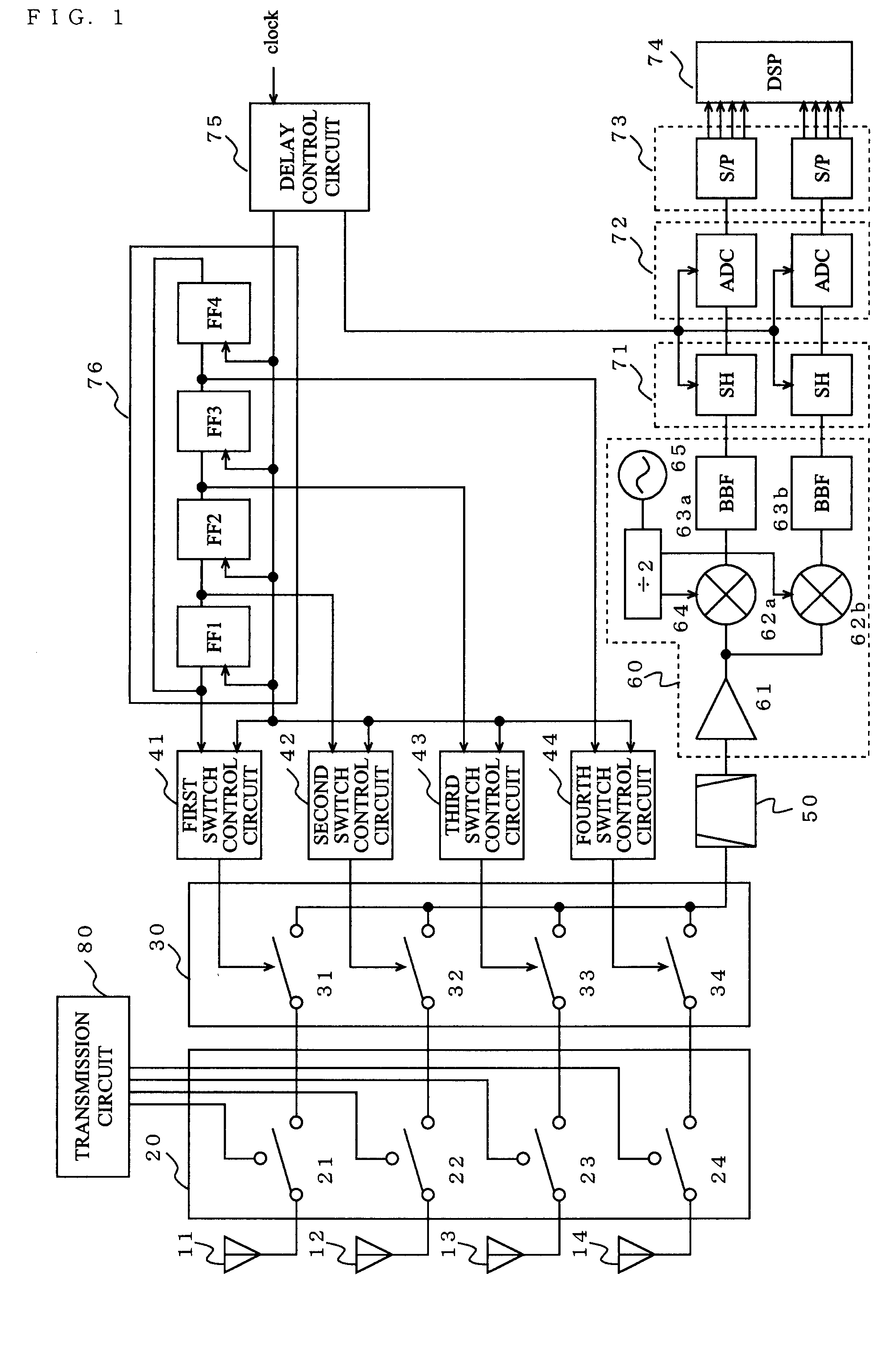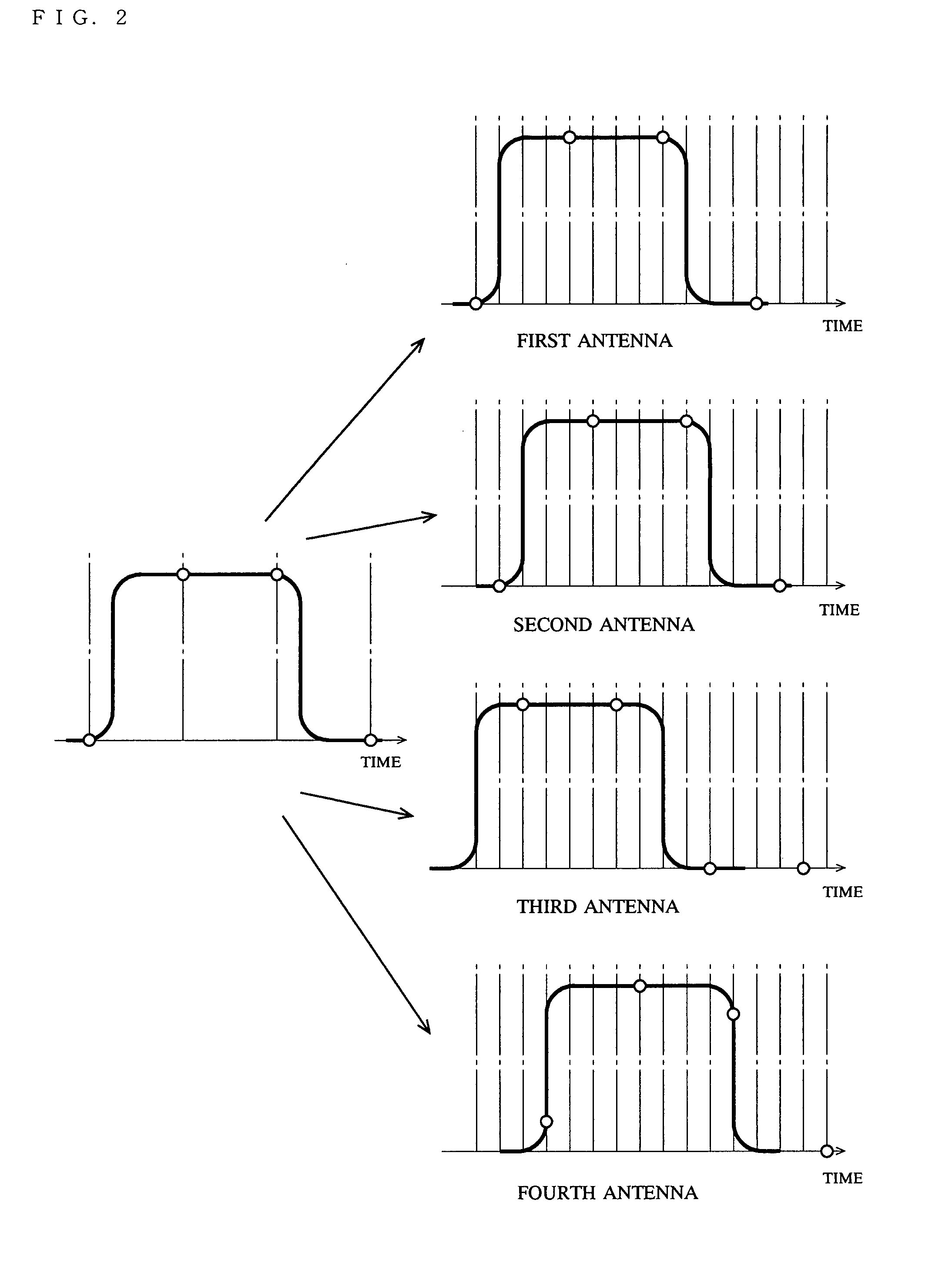Multi-antenna communication apparatus
a communication apparatus and multi-antenna technology, applied in the direction of transmission monitoring, plural information simultaneous broadcast, polarisation/directional diversity, etc., can solve the problems of interrupting communication, affecting communication, and affecting communication, so as to prevent fading, high speed, and the effect of not increasing a frequency band
- Summary
- Abstract
- Description
- Claims
- Application Information
AI Technical Summary
Benefits of technology
Problems solved by technology
Method used
Image
Examples
first embodiment
[0041]FIG. 1 is a diagram illustrating an exemplary structure of a multi-antenna communication apparatus, for use in a TDD system, according to a first embodiment of the present invention. The multi-antenna communication apparatus of the first embodiment shown in FIG. 1 comprises first to fourth antennas 11 to 14, an antenna switch 20, a signal selector switch 30, first to fourth switch control circuits 41 to 44, a band selection filter 50, a signal shaping section 60, a sample-and-hold section (SH) 71, an AD converter (ADC) 72, a serial-parallel conversion section (S / P) 73, a digital signal processor (DSP) 74, a delay control circuit 75, a frequency-divider circuit 76, and a transmission circuit 80.
[0042]Each of the antenna switch 20 and the signal selector switch 30 includes four switches corresponding to the first to the fourth antennas 11 to 14. The signal shaping section 60 includes a low noise amplifier 61, a downmixers 62a and 62b, baseband filters 63a and 63b, a frequency di...
first example
[0057]FIG. 7 is a diagram illustrating a configuration of a first example in which a field-effect transistor (FET) is used as the first switch 31, and a digital signal processor (DSP) and a DA converter (D / A) are used for the first switch control circuit 41.
[0058]The digital signal processor shapes a waveform of an inputted clock signal using Hanning window function or Root-Nyquist window function. The DA converter converts, into an analog signal, the digital clock signal having been waveform-shaped. Through this process, a control signal having a smooth rise and fall is generated. By using this control signal, the FET is gradually switched ON or OFF, thereby changing an envelope of an output signal and reducing difference in voltage at a point where a voltage waveform is discontinuous. The FET may be replaced with a MEMS switch or the like.
second example
[0059]FIG. 8 is a diagram illustrating a configuration of a second example in which three field-effect transistors (FETs) which have different sizes from each other and are connected in parallel with each other are used for the first switch 31, and a circuit for performing ON and OFF switching for the three FETs is used as the first switch control circuit 41.
[0060]The sizes of the three FETs are L=100 μm, L=200 μm, and L=500 μm. When the reception signal rises, the first switch control circuit 41 sequentially turns OFF the FETs in decreasing order of size. On the other hand, when the reception signal falls, the first switch control circuit 41 sequentially turns ON the FETs in increasing order of size. The ON or OFF switching for the FETs is sequentially performed, thereby changing an envelope of an output signal and reducing difference in voltage at a point where a voltage waveform is discontinuous. The number and the sizes of the FETs connected in parallel with each other are not r...
PUM
 Login to View More
Login to View More Abstract
Description
Claims
Application Information
 Login to View More
Login to View More - R&D
- Intellectual Property
- Life Sciences
- Materials
- Tech Scout
- Unparalleled Data Quality
- Higher Quality Content
- 60% Fewer Hallucinations
Browse by: Latest US Patents, China's latest patents, Technical Efficacy Thesaurus, Application Domain, Technology Topic, Popular Technical Reports.
© 2025 PatSnap. All rights reserved.Legal|Privacy policy|Modern Slavery Act Transparency Statement|Sitemap|About US| Contact US: help@patsnap.com



